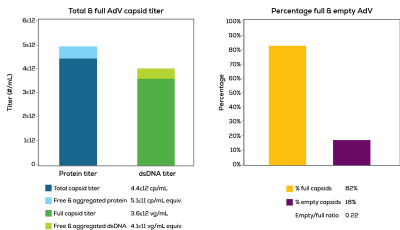Combine and conquer
Stunner is the only system that pulls together UV/Vis concentration, rotating angle dynamic light scattering (RADLS) and multi-angle light scattering (MALS) data on the same 2 μL sample. Nail down your lipid nanoparticle quality by knocking particle concentration, size, mass, detection of aggregates and total RNA off your list in one shot. Rack up protein concentration, sizing, molecular weight, and aggregate detection, all at once. Dig in to your AAV or AdV to get the total capsid titer and empty/full ratio. Without skipping a beat, you’ll know if your LNPs, proteins or viral vectors are good to go.
LNPs
● Sizing & polydispersity
● Particle concentration
● Aggregation
● Total RNA quant
Biologics
● Protein quant
● Sizing & polydispersity
● Molecular weight
● Aggregation detection
● B22 & kD
● Conjugate characterization
Viral Vectors
● Empty/full ratio
● Capsid titer
● Aggregation
● vSizing & polydispersity
Teeny sample, tons of info
Just load 2 μL of sample in a Stunner plate — don’t bother with sample prep or dilution. Each microfluidic circuit has two fixed pathlengths built-in to cover a wide dynamic range of 0.03-275 OD. If you’re dealing with a full plate, get 96 concentration measurements in 10 minutes — add on sizing from multiple angles and have it all done in around two hours. For even heavier workflows, hook it up to your favorite robot to add more oomph.
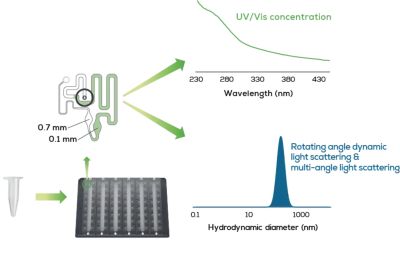
LNP sizing & quant in one shot
Stunner sizes up and counts your LNPs by combining DLS and SLS data from a bunch of different angles. Compare different formulations and mixing parameters to see which one gets you the perfect LNP size. From the same experiment, Stunner will tell you which one contains the most LNP particles. Be certain your LNPs are the size you were hoping for and that you have enough of them to see what they can do.
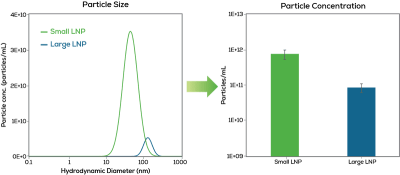
Count on it
No matter how large or how many LNPs you have, Stunner deals out accurate sizes and particle counts. Confirm the concentration after any dilution step and see how it affects the size of your LNPs. Keep a close eye on the concentration and size of your LNPs at every step in your process — from formulation screening to scale-up and everything in between.
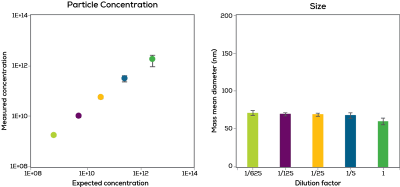
Know what’s up
Stunner can catch even the tiniest bit of aggregation. Check out your LNP size by intensity distribution first and stay on the lookout for aggregates. If you see aggregation rearing its ugly head, make the switch to mass distribution to see how bad it might be. Beef up your sizing stats and never get fooled by rogue aggregates again.
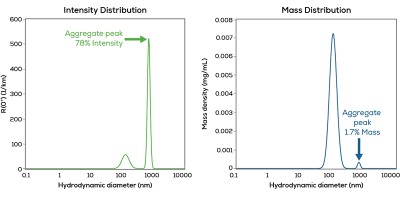
See through the fog
Cloudy solutions of LNPs and other nanoparticles hang up other techniques but Stunner’s short pathlengths teamed up with UV/Vis get you the answers you need. Cut through all that turbidity with Unmix and check out just the absorbance signal from your payload.
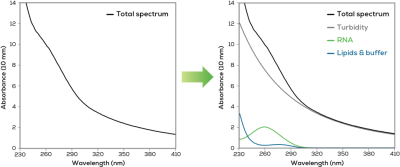
Screen at light speed
Stunner and Sunscreen are the fastest tag-team for LNP screening. Sunscreen creates up to 96 different LNP formulations in 5 hours, then Stunner characterizes the need-to-know info on your LNPs in about 2 hours. Combine UV/Vis, DLS and SLS from multiple angles to get size, payload quant, particle concentration and the average amount of RNA molecules per particle. Stunner always tells the whole lipid nanoparticle story.
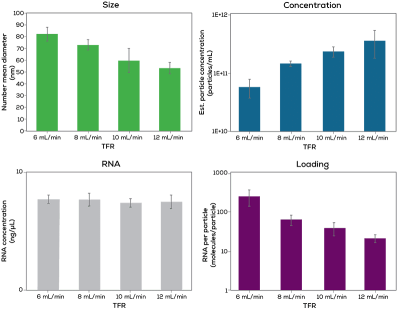
Ridiculously good data
Get spot-on precision within 1% and accuracy within 2%. Using two fixed pathlengths, Stunner gets you jaw-dropping data at both low and high protein concentrations and nails the expected concentrations every time. With the smallest sample size, the highest throughput and crazy accurate results, Stunner is hands down the best tool out there for protein quantification.
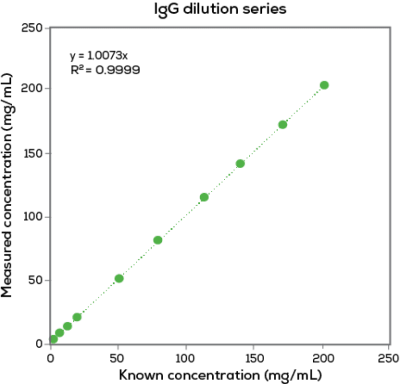
Track down the big boys
When it comes to the quick and easy detection of aggregates, Stunner pulls rank. See your monomer based on mass, then switch over to intensity to spot even the tiniest bit of aggregation. QC your protein at every step of your process and catch aggregation before it becomes a bigger problem.
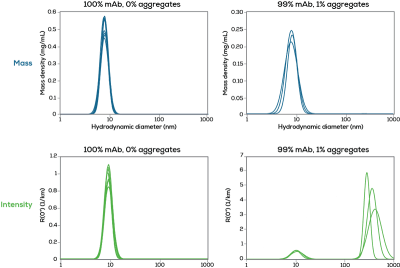
Get the skinny on proteins
Stunner serves up spot-on light scattering data for proteins, so you can compare samples head-to-head based on size, intensity, mass and number. Measure the hydrodynamic size, grab polydispersity when you need to check uniformity, and get the molecular weight while you’re at it.
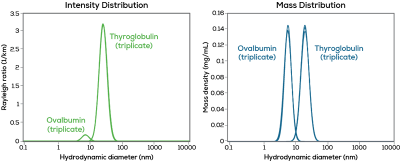
Feel the attraction
Stopping aggregation in its tracks is critical. Stunner deals out B22 and kD, indicators of a potentially looming problem, in one simple experiment. All you do is create a quick dilutions series, load it on a plate and you’re good to go. Stunner checks the exact concentrations while light scattering figures out if your protein is attractive (negative slope) or repulsive (positive slope) to itself.
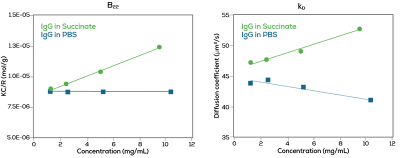
Antibody-anything conjugate
Don’t waste time on complicated workflows to characterize your antibody conjugate. Get size and polydispersity and use Stunner’s Unmix analysis to know everything about your Ab concentration, conjugate concentration and their ratio, all in one go. Untangle everything about your antibody conjugate, whether it’s hooked up to a drug, an oligo or anything else.
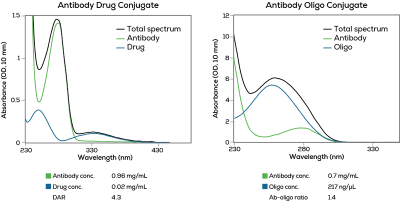
Look your AAV up and down
Drop in your AAV and before you can blink, DLS & SLS figure out how many intact capsids you have or if a bunch of aggregates are screwing things up. See empty/full ratio, total protein and total ssDNA in about a minute with UV/Vis. Don’t worry about extinction coefficients or overlapping spectra — Stunner does all the math for you.
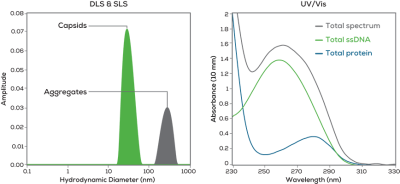
Know your AAV inside out
Get to the numbers you actually want — titers. Stunner bridges DLS and UV/Vis data to tally up how many full and empty capsids are present, and how much extra protein and DNA is left over. Take your cleaned up AAV and sneak a peek down to 1012 vg/mL. In just one assay, Stunner’s dye-free, label-free, standard-free, hassle-free workflow tells the whole titer story.
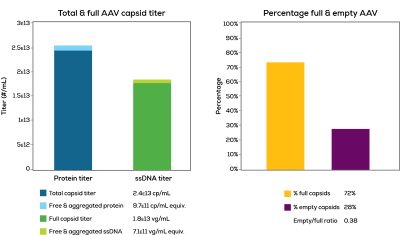
Titer for any serotype
Every AAV is different, but Stunner figures them all out. Pick a preloaded serotype or feed in the specs for your virus and get answers in seconds. Now you can check capsid titers and empty/full ratio as often as you want.
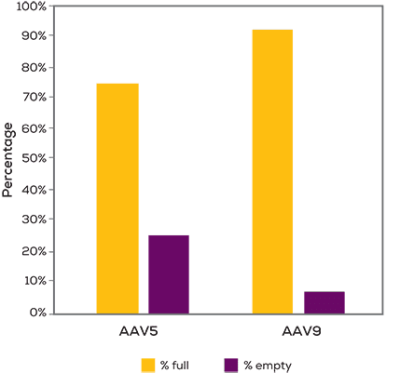
Aggregates ruin everything
Globs of AAV can stand between you and high-quality data for pretty much every assay. DLS checks if your AAV is monodisperse so the rest of your process doesn’t get tripped up by aggregates.
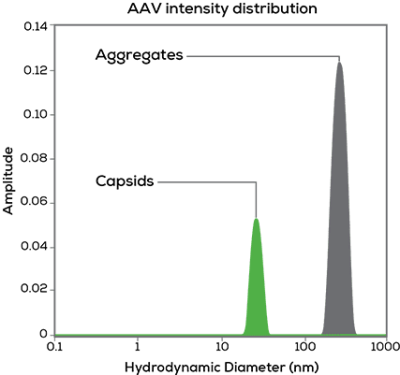
Adeno? I do know!
Get legit adenovirus (AdV) titers down to 109 cp/mL with Stunner’s readouts on total, full and empty capsids without getting thrown off by annoying contaminants like aggregates and extra DNA. Outsmart old school A260 measurements by Unmixing the absorbance of your AdV into protein and dsDNA signal, so you get the low down on what’s really in your sample.
